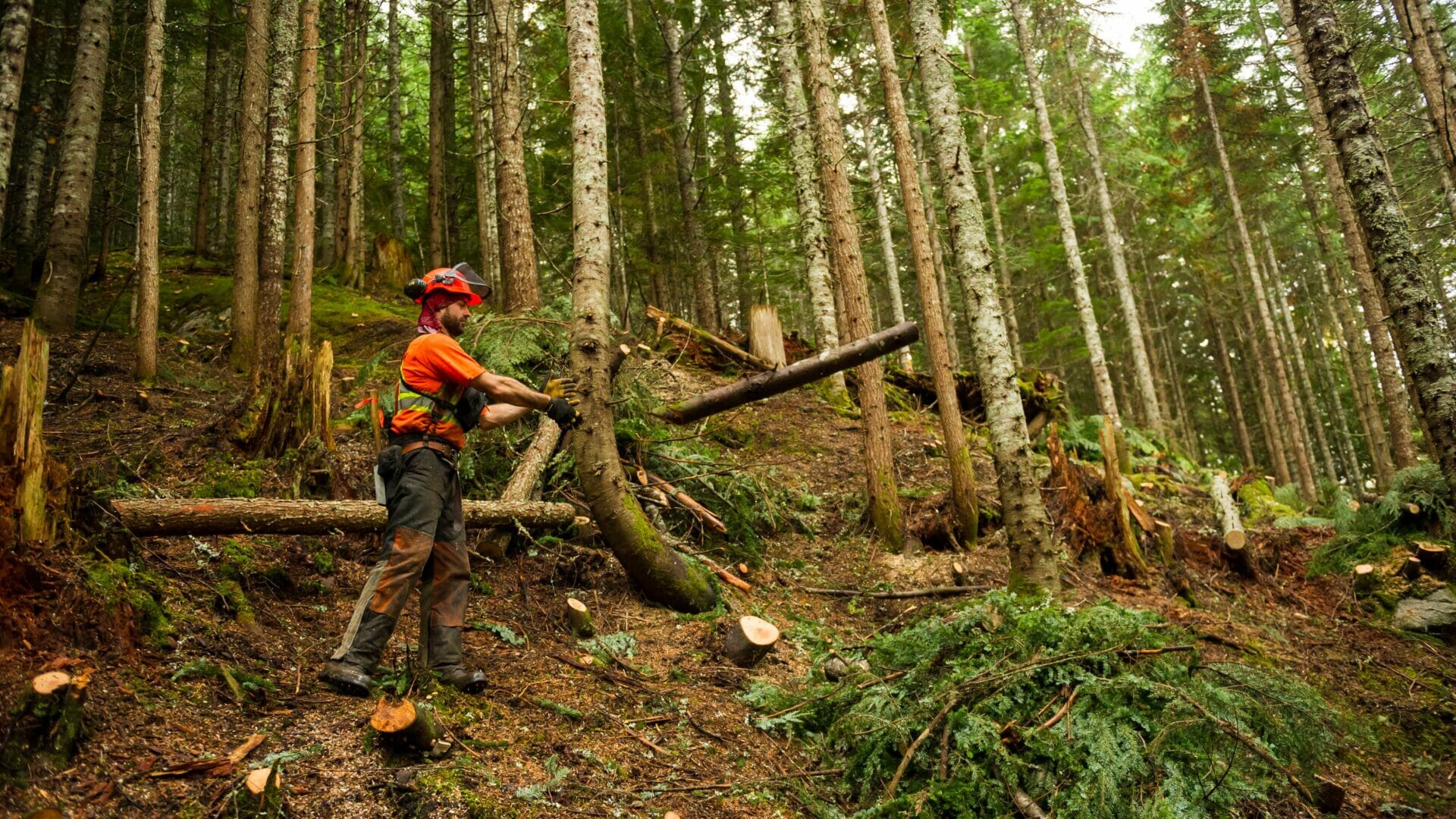
Whistler is surrounded by forest and is at risk for wildfires. Wildfire fuel reduction (reducing the amount of highly combustible organic matter such as trees and woody debris) is one component of Whistler’s Community Wildfire Resiliency Plan and includes techniques such as fuel thinning and fire breaks.
Fuel management in Whistler
The Resort Municipality of Whistler has been conducting wildfire vegetation management projects on Crown and municipal lands since 2004 to reduce the risk of wildfire to our community. The primary goal is to reduce forest fuel loads within the wildland-urban interface to reduce the ability of fire to spread from the forest into the community and vice versa, and to make wildfires easier to fight. Fuel thinning will be discontinued when the fire hazard goes to extreme and will resume when the fire hazard is lower.
Sometimes projects need to burn some of the wood debris. We will alert the public through social media. There is no need to report smoke from fuel thinning projects.
Current Projects
Status
Work is planned for April to October.
Impacts
No be determined.
Maps
Green Lake area
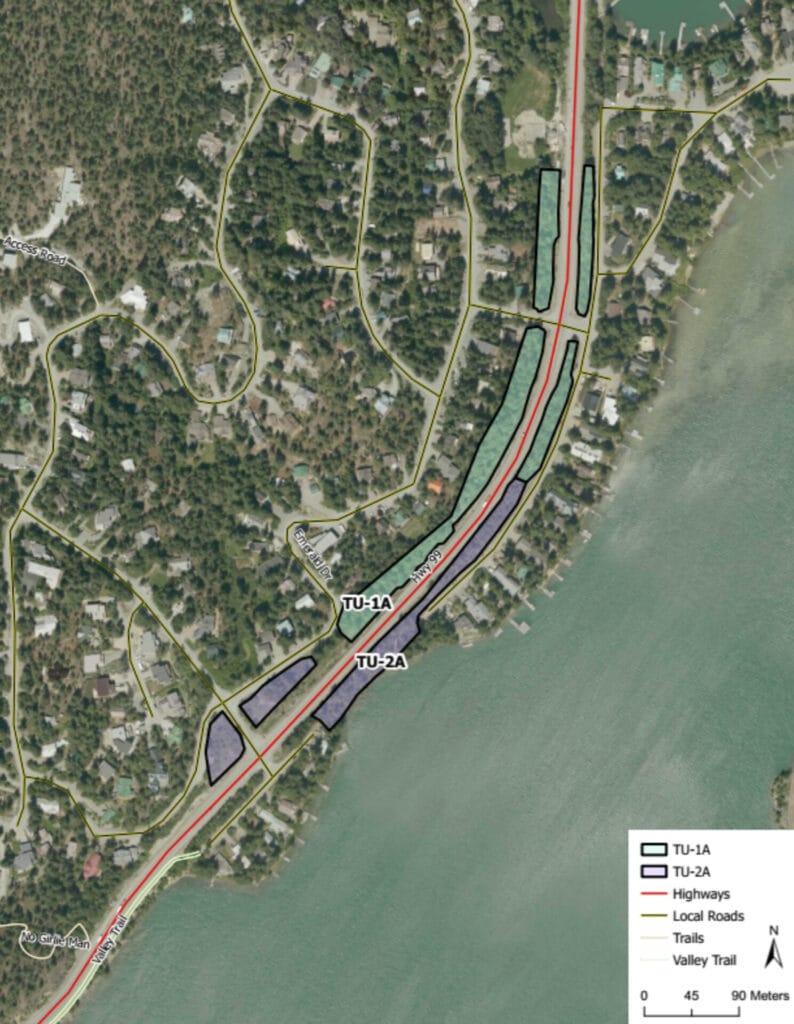
Highway 99 area close to Whistler Village and Whistler Cay
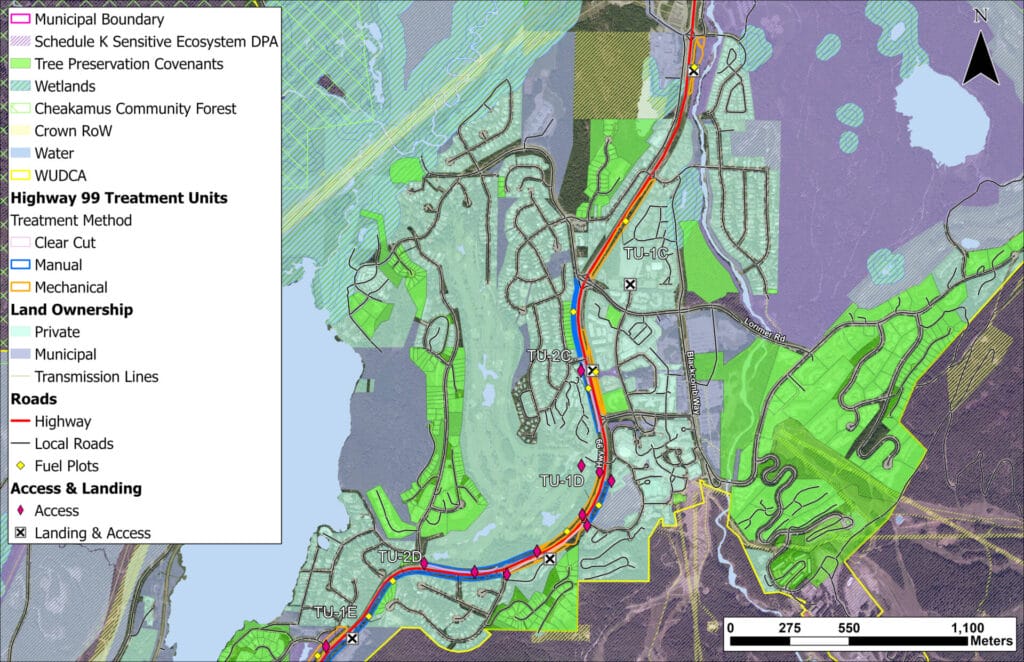
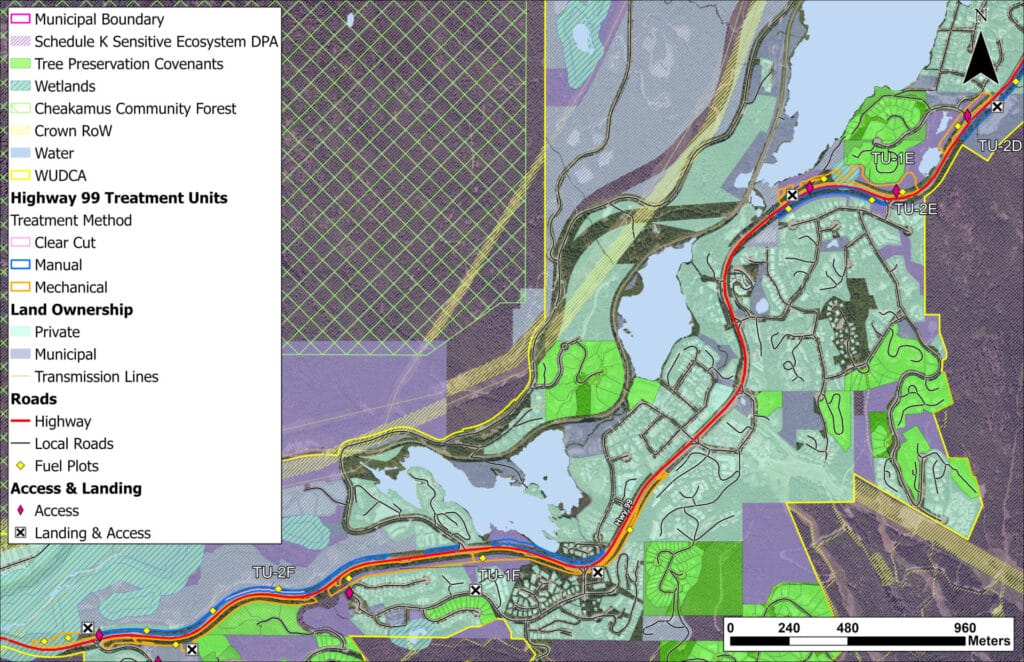
Highway 99 Village to area around Creekside
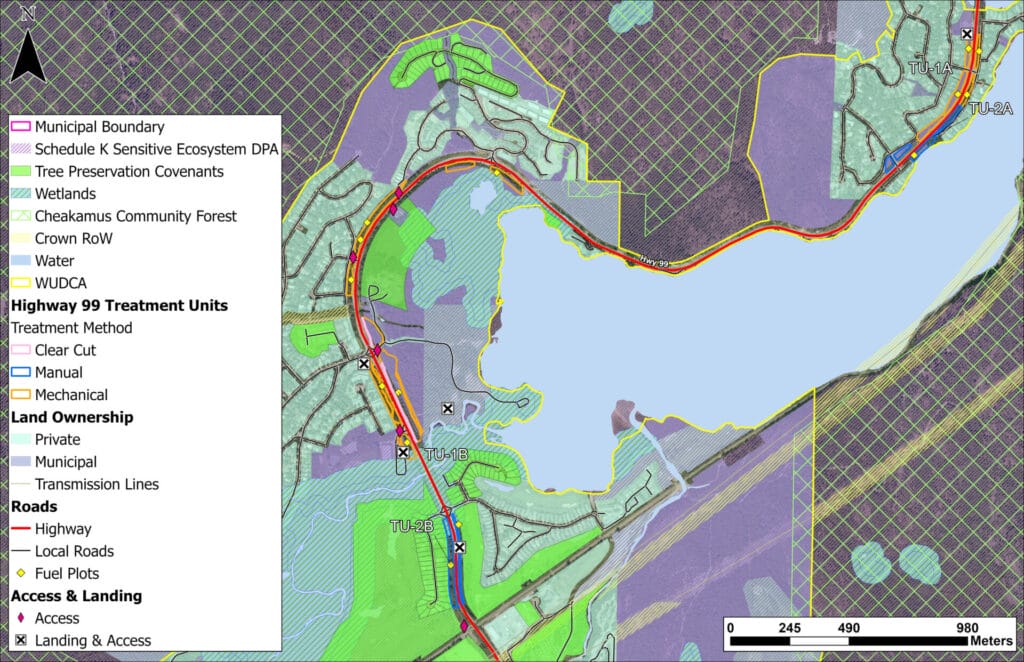
Status
Work begins on Monday, March 25, 2024 and is slated for completion in June.
Impacts
Several trails will be affected, including Trial and Error, Big Kahuna and Neighbor’s Knoll, as well as the Access Road. For your safety, please respect the signs as the contractor will be falling trees and using heavy equipment. Crews will do their best to minimize disruption and all trails will be restored after the work is completed.
Most of the material will be chipped and removed while the project is underway. Some pile burning may be necessary and will only happen during appropriate venting periods in the fall.
Map
View map of area.
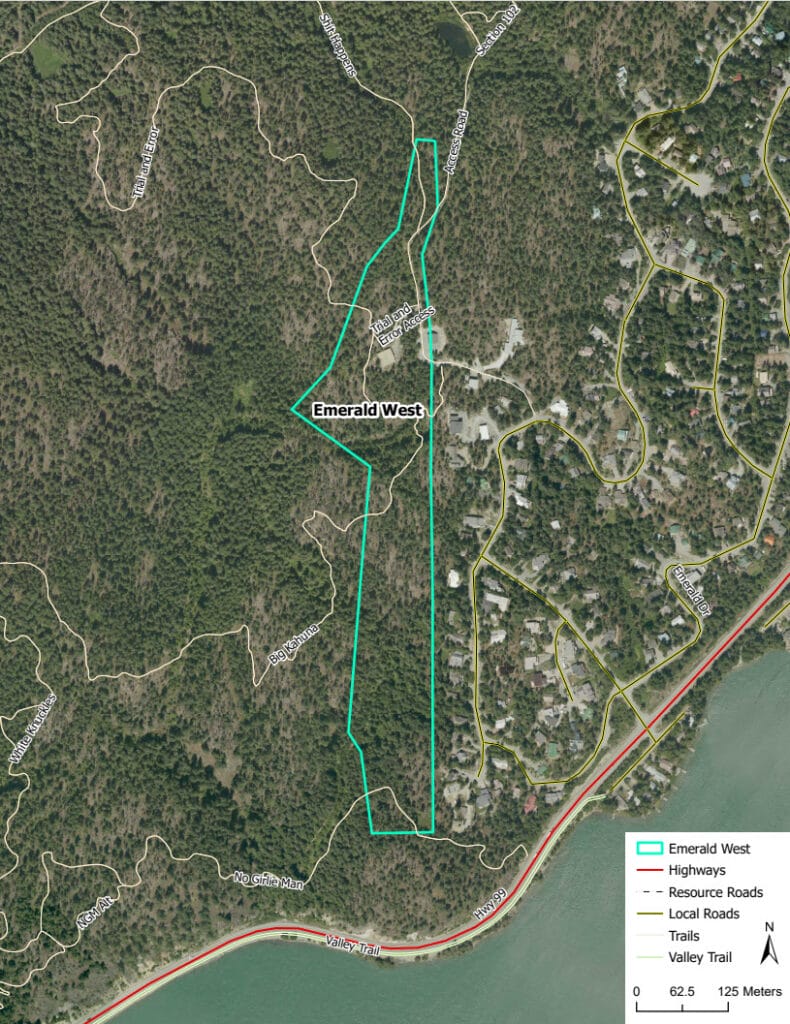
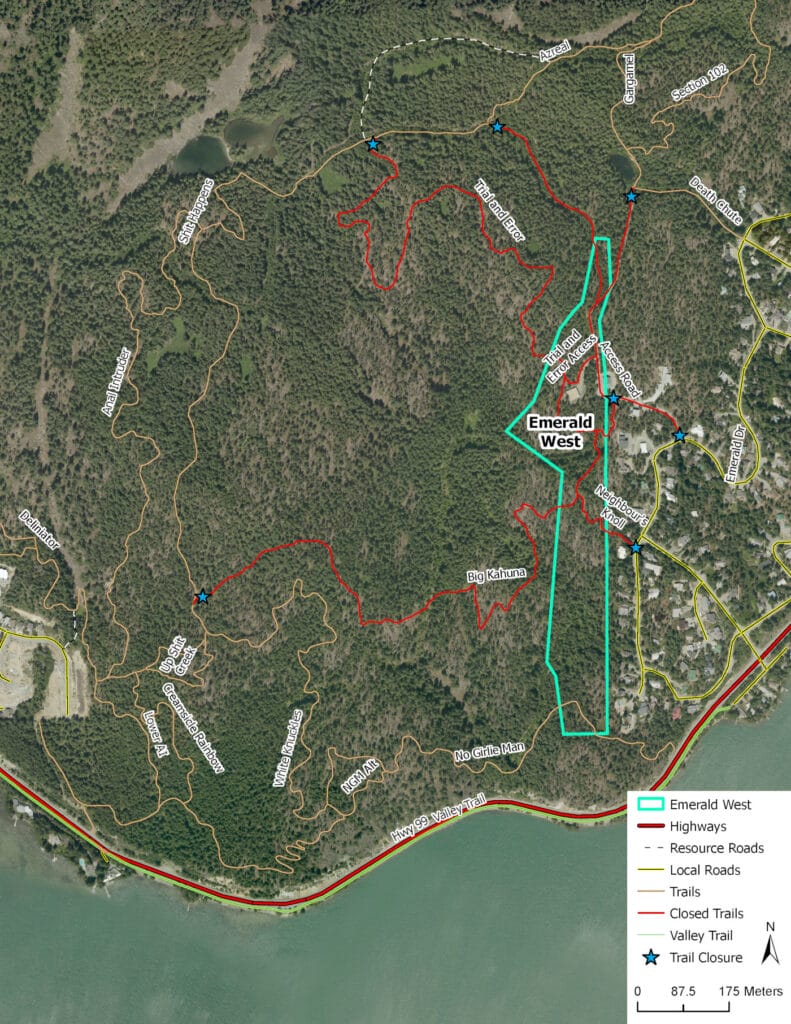
Emerald West project, zoomed out.
Status
Work is planned for June to July.
Impacts
No trails will be affected.
Map
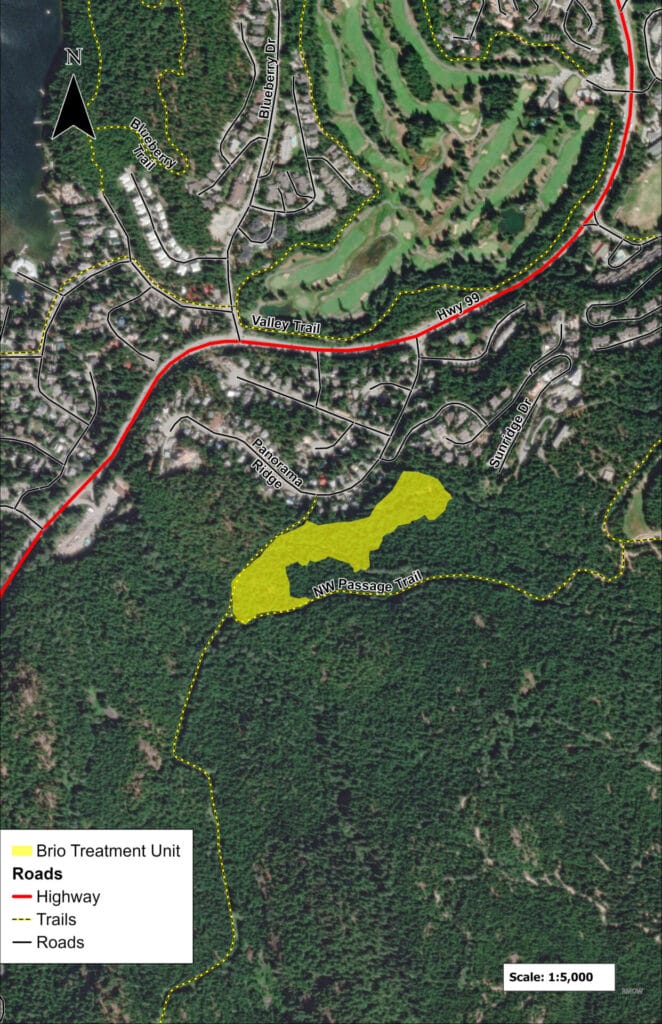
Status
Work is planned for July to October.
Impacts
To be determined.
Map
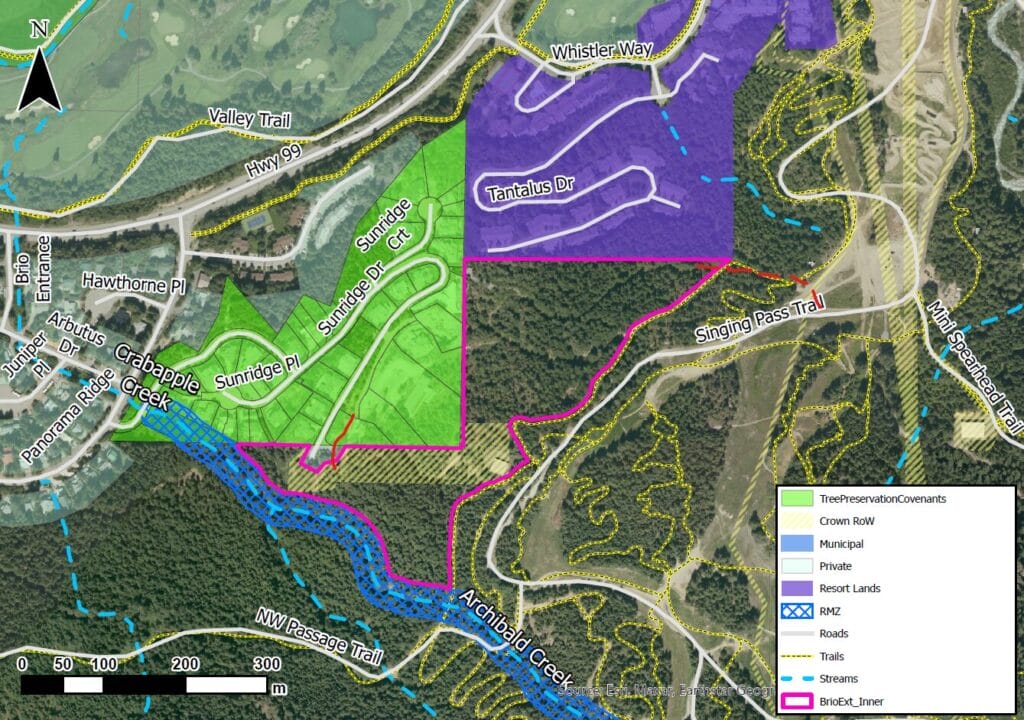
Completed projects
This project took place in late August 2023
This project took place in late July 2023.
This project took place in spring 2023
This project took place from June to August 2023.
Phase 3 commenced on November 30, 2020. The three year project conducted in partnership with the Cheakamus Community Forest and largely funded by the Forest Enhancement Society of BC is now complete.
Sixteen hectares were completed along the western edge of Lost Lake Park from the Scandinave Spa to the PassivHaus in 2019/20. The UBCM Community Resiliency Investment program provided partial funding. View the Spruce Grove Wildfire Fuel Management map
The Resort Municipality of Whistler (RMOW) continued wildfire prevention work through August and September 2020 on Nesters Hill, one of the priority areas identified in the RMOW Wildfire Program 2019-2027. Two hectares were treated on the east side of Nesters Hill adjacent to the RMOW Public Works Yard and Rainbow substation.
The remaining work on ~10 hectares on Nesters Hill began in April 2021 and was completed June 30. The trail network is now open. Note that crews will return in the autumn to burn the remaining small debris piles.
View the Nesters Hill fuel thinning map
In autumn 2018, the Resort Municipality of Whistler (RMOW) and the Cheakamus Community Forest (CCF) began year one of a three year project to thin a total of 113 ha along either side of Cheakamus Lake Road. The work was completed in spring 2021.
The RMOW and CCF worked with WORCA to ensure trails in the area are taken into consideration, and with BC Parks to reduce disruption to the Cheakamus Lake Trail parking lot.
There are now two defensible areas to the south of Whistler along the Callaghan FSR and the Cheakamus Lake FSR where fire fighting crews could take action to protect our community from a wildfire moving in from the south. We thank the community for its patience and understanding while this important community protection work was done.
Fuel thinning crews began work at the High School site on October 12 and finished on November 3. Tree thinning work is completed.
The 2021 scheduled fuel thinning work in the Taluswood area is now complete. In spring 2022, crews will resume work to complete the fuel thinning in this area.
Fuel thinning in Taluswood began July 6, but was put on hold in late summer due to the high fire danger rating. Work later resumed and wrapped up October 8 for the 2021 season. Some biking and hiking trails on Whistler Mountain above Creekside were impacted while fuel thinning was completed. The crew will return in spring 2022 to complete the project and attend to the trails.
- Rainbow neighborhood project (July – October 2022)
The wildfire risk reduction work took place in 2022 on two areas totalling approximately 14 hectares in a portion of Treatment Units 5B and 6.
Tree thinning commenced on July 12, 2022 in Treatment Unit (TU) 6 and was completed in autumn 2022 with TU 5B.
Process and goals
Vegetation management focuses on leaving mature and deciduous trees, while removing ground brush and debris, pruning lower branches, and removing tight, unmanaged second growth trees. This is accomplished by:
- Reducing the number of trees in the stand to open the upper tree canopy and reduce ability of fire to move from tree to tree;
- Focusing on removal of small diameter trees and retaining fire-resistant species such as old growth, Douglas-fir and deciduous trees;
- Reduce fine woody surface debris, while retaining larger coarse woody debris for habitat and soil productivity;
- Pruning trees to reduce ladder fuels between the ground and the forest crown; and
- Removing dangerous trees to protect workers, while maintaining high value wildlife trees where possible.
In addition to reducing forest fuel loads, secondary objectives are to protect critical infrastructure and facilities in Whistler, restore open forest conditions and demonstrate the principles and practices of the FireSmart program.
Fuel breaks
The RMOW completed a study in 2012 which was incorporated into the Community Wildfire Resiliency Plan to identify where landscape level fuel breaks should be created along forest service roads around Whistler. The focus is on reducing tree densities in unmanaged second growth, rather than removing old growth or deciduous trees. Thinning stands within 100 – 200 m of each side of the road reduces the fuel available to feed fire growth and creates safer, defensible areas for firefighting crews to work in.
Contact
Manager of Climate and Environment
Luisa Burhenne
lburhenne@whistler.ca
